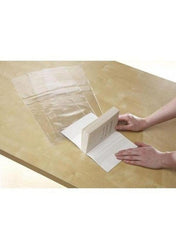Implemented to teach young people the necessary skills for further academic skills and future work, the Irish Junior Cycle engages students in the first three years of their post-primary education. It intends to build on students’ Primary School education by developing crucial skills for adulthood such as time management, effective reading and writing and working under pressure.
The Junior Certificate examination is being replaced by the Junior Cycle Profile of Achievement (JCPA). Along with English and Irish, one of the core subjects students have to sit for their Junior Cert is Mathematics. In this guide, we will explain what the Junior Cycle Mathematics exam involves and what students can expect. We’ll also discuss methods for revising this subject and highlight some resources to support this.
Click on a link to jump to that section:
The Junior Cycle Mathematics exam
As one of the core subjects studied at Junior Cycle level, the final Mathematics examination is sat at an Ordinary or Higher level. However, it is also possible to study Mathematics at a Foundation level. The exam papers given to students at these different levels are differentiated by the language used in the questions, the stimulus material provided and the structured support provided in the questions.
The exam papers are set and marked by the State Examinations Commission (SEC). They cover five key strands of Mathematics: Statistics and Probability, Geometry and Trigonometry, Numbers, Algebra and Functions.
The teaching and learning of Mathematics during the Junior Cycle focuses on concepts and skills and contexts and applications. The learning outcomes driving this education, and which students are tested on during their final examination, include the ability to recall and demonstrate an understanding of the fundamental concepts and procedures that underpin each of the strands mentioned above, applying the relevant procedures effectively and appropriately, and representing, interpreting and analysing mathematical situations in a variety of ways (numerically, algebraically, graphically and physically).
Students should make connections within and between the strands as well as with the real world, making sense of written mathematical problems by applying their knowledge to break down problems into manageable parts.
What to expect in Junior Cycle Mathematics exam papers
While the number of questions on the Junior Cycle Mathematics exam may differ from year to year, the paper will always cover the learning outcomes and key strands of the syllabus. At the Ordinary and Higher levels, the exam is split into two papers. The Higher level papers both last two and a half hours, whereas the Ordinary level papers are both two hours long. For Foundation level students there is only one paper.
Students are not allowed to bring their own formulae or table notes into the exam but a booklet with the necessary formulas will be given before the exam begins.
For every question that entails a unit of measurement, students will be expected to include appropriate units of measurement in their answers and working out. Marks could be lost if these are not included.
Students should always show their process of working out the solution to a question as often marks will be given for an attempt. The exam papers will include extra pages in the back of the booklet for these workings, which should be labelled with the relevant question number and section.
How to revise for Junior Cycle Mathematics exams
It’s important for students to familiarise themselves with the marking schemes so that they’re aware of what earns each mark for different styles of questions. By referring to the official mark schemes, students can begin to factor in good practices, such as clearly marking working out and using the appropriate units of measurement for easy marks.
YouTube can also be a great resource for audiovisual revision. Not all students benefit from written text in their revision and many will struggle more with this. YouTube videos or similar online resources that include tutorials, question deconstructions, clarifications of the mark scheme, or even unorthodox ways of explaining certain techniques and processes can be very beneficial for making sense of mathematical problems.
Constant practice is the best way of revising Mathematics. This not only helps with becoming familiar with a calculator and manually working out the solutions to problems, but also improving memory and confidence.
Edco Mathematics exam papers
One of the best ways of revising Mathematics is through past papers. The most common cause of exam stress in the middle of an exam is unpreparedness and unfamiliarity with the paper. While students won’t be able to prepare for the exact questions that will appear before the exam, they can become more confident with the layout itself.
Edco’s Ordinary and Higher level exam paper sets are packed with 10 sample papers to help students become more comfortable with the structure of the exam. They also include a guide to better grades, a topic-by-topic analysis chart and access to an online study hub to make this revision process as stress-free as possible.
Students can use the nine Edco sample papers and SEC final examination sample paper provided to practice their timing, workings and ability to pay attention to the wording of questions, and then check their answers against the solutions provided.
Other resources for revising Junior Cycle Mathematics
As well as Edco’s exam papers, there are additional resources available to support Mathematics revision. These include Less Stress More Success at Ordinary (Book 1 and Book 2) and Higher level (Book 1 and Book 2). Higher Book 1 covers the Number, Algebra and Function strands, and Book 2 covers the Geometry and Trigonometry strand as well as Statistics and Probability.
Less Stress More Success books are condensed and organised with key information highlighted, expert tips on maximising exam points and exam questions for testing knowledge. They focus on the essential material from each topic and include detailed chapters on CBA 1 or 2 statistical investigation.

